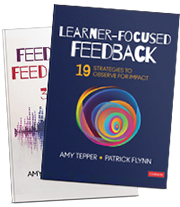*A follow up to my previous post – Connecting Teacher Action with Student Outcomes.
This morning I attended a meeting of the Performance Evaluation Advisory Council (PEAC). PEAC, charged with leading Educator Evaluation in the state of CT, began conversations today on the weighting associated with the current components of educator evaluation. It has been long understood that the structures have required discussion and change, so I applaud the focus on this important topic.
In conjunction with some creative PDEC Committees (Bethany Public Schools comes to mind), ReVISION Learning has processed the importance of educator reflection in ensuring student performance and its corresponding role in educator evaluation. In other words, we began our work together with the premise that teacher and/or collective reflection on student outcomes is at the heart of greater levels of student growth (Hattie, 2009). As a result of focusing discussions in this way, development of district-level policy is driven by student growth and, as equally important, a deep and meaningful understanding of how that student growth has been directly impacted by practice.
What has been clear to this point in the evolution of CT’s educator evaluation programming, is that while there has been progress made in conversations about teaching practice, there is still much to be done in creating reflective practice that connects teacher actions to student outcomes. Even as some will cite reflection among teachers and administrators as having improved through the current process, the question now becomes…
How does the system ensure that this reflection is not only about how teachers do their job,
but also…
how and why do their practices impact student learning?
————————————————————————————–
Below is an outline of our suggestions to PEAC as they consider their decisions in the upcoming month and year.
To understand our proposal, I’ll start with the current CT structure:
| Evaluation Component | Current Weight | Weighting Breakdown |
| Practice Rating | 50% | |
| Performance and Practice | 40% | |
| Stakeholder Feedback | 10% | |
| Outcomes Rating | 50% | |
| Student Learning Objectives (SLO) | 45% | |
| Whole Student Learning Goals and Student Feedback | 5% |
Our Proposal (rooted in what we know is good practice about learning)
Practice Ratings
Change from 50% to 60% or higher.
We have long proposed that the emphasis in educator evaluation be placed on HOW teachers are impacting students. Revealing this understanding among all educators is what the performance and practice component should be codifying.
The 60% Practice component would include:
- Performance and Practice -50% based on three core modalities of evidence collection by a qualified supervisor, each tied directly to a four-point rubric.
- Observation
- Artifact Review
- Collegial Dialogue.
The 2015 version of the Common Core of Teaching provided by the State Department of Education provides a quality tool for analysis of learning in the classroom. What is most important is that evaluators stop focusing their evidence collection on only teacher practice and begin to collect evidence of learning, setting up teacher reflection on the thing that matters most – how students are learning.
It is important to note our common disclaimer at this very moment – evaluators NEED training AND training needs to be measurable through a quality performance assessment completed by evaluators.
Also, non-negotiables throughout the state need to be established about the quality of evaluators:
- Evaluators need to clearly demonstrate capacity to observe and collect evidence, analyze evidence, and provide feedback.
- Districts need to document inter-rater agreement among all evaluators.
If we do not invest in evaluator training then we simply will be attempting to improve a system that will be poorly executed (at no fault to all the evaluators throughout the state currently working very hard to make the work meaningful).
Maintain the current 10% based on Stakeholder Feedback with one important change.
Our recommendation is that targets should be set as a school and, through collective practice, teachers and administrators are then charged with addressing fundamental issues revealed in annual climate surveys. Additionally, PDEC committees should consider alignment between the associated rubrics used to measure performance and practice (such as CCT) and the establishment of actions steps to be taken to meet targets (such as communication with stakeholders-CCT Domain 4). For example, if annual surveys reveal that ongoing communication with parents is an issue, then all teachers would work collectively to remedy this and measurement of success would be based on changes revealed in the corresponding climate survey. Collective efficacy is an essential part of successful educational practice and should be measured accordingly.
Outcomes Ratings
Change from 50% to 40% or lower. Before anyone claims that we are trying to water down the student outcomes, take time to re-read the Practice Outcome information just shared and then pay close attention to the design we are presenting to our Student Learning Objectives (SLOs). We do more with less than what is currently in place – I assure you.
We recommend up to two SLOs, each would be worth 20%. This would include:
- Up to five Indicators of Academic Growth (IAGDs) for each SLO, depending on the assessment being used to monitor progress.
- One IAGD would be based on completion of a Student Outcome Portfolio (designed to support targeted reflection linking practice and outcome). The remaining IAGDs would be designed as Banded Student Growth Goals. Banded Student Growth goals are design to target the different levels of student performance commonly found in our classrooms while closing the gap that currently exists.
Need more information on either of those ideas, contact us or keep an eye out for future posts.
- At least one SLOs/IAGDs would be based on a standardized assessment. Where possible, both SLOs/IADGs should be based on standardized assessments.
- All SLOs should be directly connected to the strategic initiatives of the district and school improvement plans.
Eliminate the 5% associated with Whole School Indicators or Student Surveys. Student Surveys can and should be part of the Stakeholder Feedback component already described and Whole School Indicators are examined more effectively through the design of SLOs in alignment with strategic school improvement plans.
The suggestions we are outlining are designed in alignment with our work in educator evaluation over the past five years. We have worked with over 800 evaluators and 52 districts since our inception, and one thing that has been overwhelmingly clear is that policy needs to catch up with practice. Practitioners are ready for meaningful, reflective practice, now PEAC needs to provide the policy.




Leave a Reply